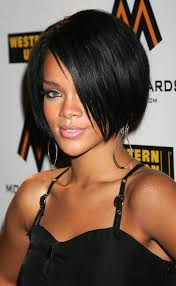Welcome back to guest poster Natalie Wilson, whose new column, Pop Goes Feminism, starts tomorrow!
It’s not about hating men, it’s about helping Haitian women
If one can wrangle any positive shards from the rubble that now pervades Haiti’s landscape, I would say that it would be the tremendous outpouring of concern and aid. Unfortunately, such concern tends to fade and aid donations shrivel once the media moves on to its next story.
Once the Haiti earthquake is merely a blip on the mental desktop of most Americans (like Hurricane Katrina before it), the situation for the majority of Haitians will not have changed for the better. Rather, especially for women and children, the situation is likely to be even worse than it was before. This is why some organizations are targeting their aid at women and children.
As reported by Tracy Clark-Flory, the “women and children” first aid model some organizations are taking makes sense due to the fact that women and children are typically the ones most vulnerable in the wake of a catastrophe.
Before the earthquake, Haitian women were already dealing with extreme poverty, lack of adequate healthcare, high rates of HIV/AIDS, and huge infant and maternal mortality rates. They live in a country that only made a rape a criminal offence in 2005, where at least 50% of women living in the poorer areas of Port-au-Prince have been raped. Haiti also has a serious child trafficking problem and huge numbers of girls working as domestic servants.
The global mamas of Haiti, as detailed by the International Childcare organization, must cope with the fact that one in eight Haitian children never live to see their fifth birthday due to infectious disease, pregnancy-related complications, and delivery-related complications. In Haiti, the poorest nation in the Western Hemisphere, many parents cannot afford to send their children to school, give them proper medical care, or even guarantee that their children will have safe drinking water.
For all of these reasons, Haiti needs what Lucinda Marshall calls Gender-Responsive Aid. As she notes, “there are needs that are specific to women, particularly for pregnant women and mothers with new babies and the need to address the added vulnerability to violence that women face when government infrastructures are dysfunctional.” Yifat Susskind of MADRE explains that disasters are often followed by a rise in gender-based violence: “When men deal with very, very difficult stresses, one of their outlets is violence against women.”
In addition to the tendency for increased violence against women in the aftermath of a disaster (as also noted here), women are already economically disadvantaged in Haiti (due in large part to what is commonly known as the feminization of poverty). As noted by MADRE,
“…women are often hardest hit when disaster strikes because they were at a deficit even before the catastrophe. In Haiti, and in every country, women are the poorest and often have no safety net, leaving them most exposed to violence, homelessness and hunger in the wake of disasters.
Because of their role as caretakers and because of the discrimination they face, women have a disproportionate need for assistance. Yet, they are often overlooked in large-scale aid operations. In the chaos that follows disasters, aid too often reaches those who yell the loudest or push their way to the front of the line. When aid is distributed through the “head of household” approach, women-headed families may not even be recognized, and women within male-headed families may be marginalized when aid is controlled by male relatives.”
To make matters even worse, when the earthquake hit, Haiti’s Ministry of Women was holding a meeting–and nearly everyone there was killed or injured. (For the full story, see here). The loss of these women’s rights leaders is a severe blow to relief efforts throughout the entire country.
Despite all the reasons for gender-responsive aid, some have equated this approach with misandry–as in this article. Such spurious claims miss the point entirely and fail to recognize that gender-responsive aid benefits everyone, not just women. Gender-responsive aid isn’t about hating men, it’s about recognizing a gendered response to this disaster is necessary.









 We wrote a posted called
We wrote a posted called  Time for some serious talk about men’s violence. I’ll break it down to make a difficult point really simple.
Time for some serious talk about men’s violence. I’ll break it down to make a difficult point really simple. Everyone should take a look at this
Everyone should take a look at this  In case you missed it, an article in today’s NYTimes (“
In case you missed it, an article in today’s NYTimes (“ We’ve been marinating on 2008; what an incredible year! Turbulent, exciting and really most of our wishes seemed to be granted in one fell swoop with the outcome of the US election.
We’ve been marinating on 2008; what an incredible year! Turbulent, exciting and really most of our wishes seemed to be granted in one fell swoop with the outcome of the US election.